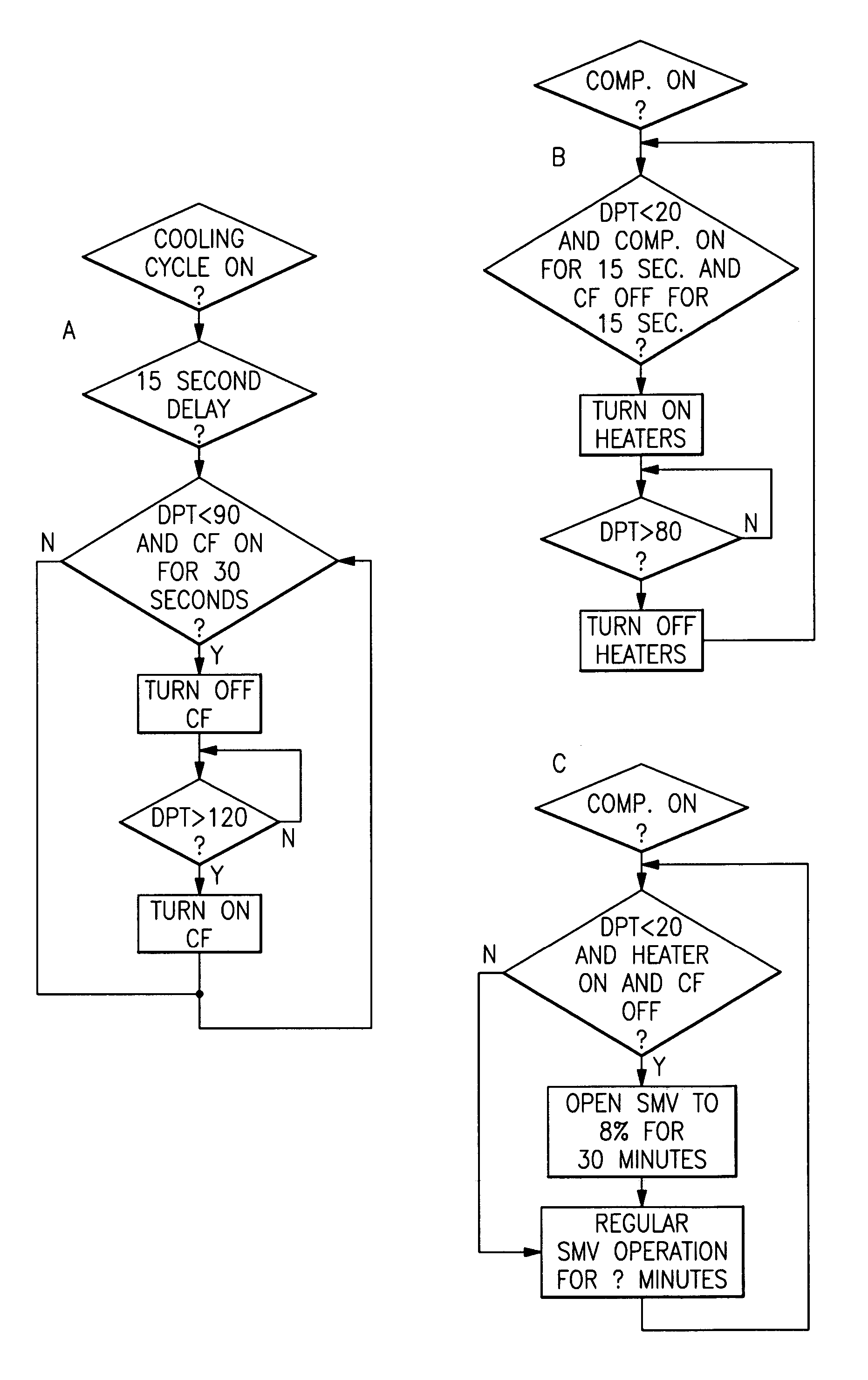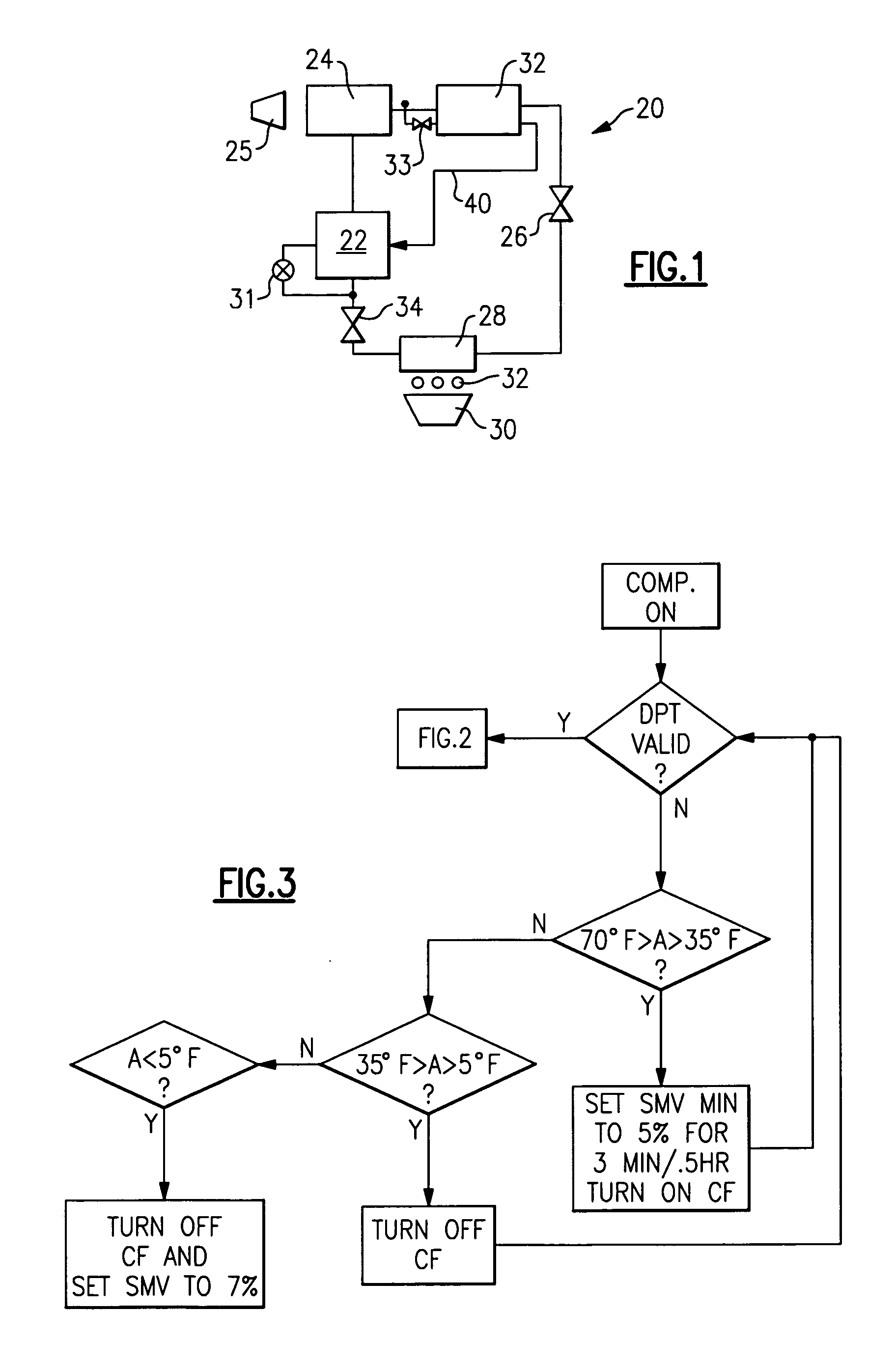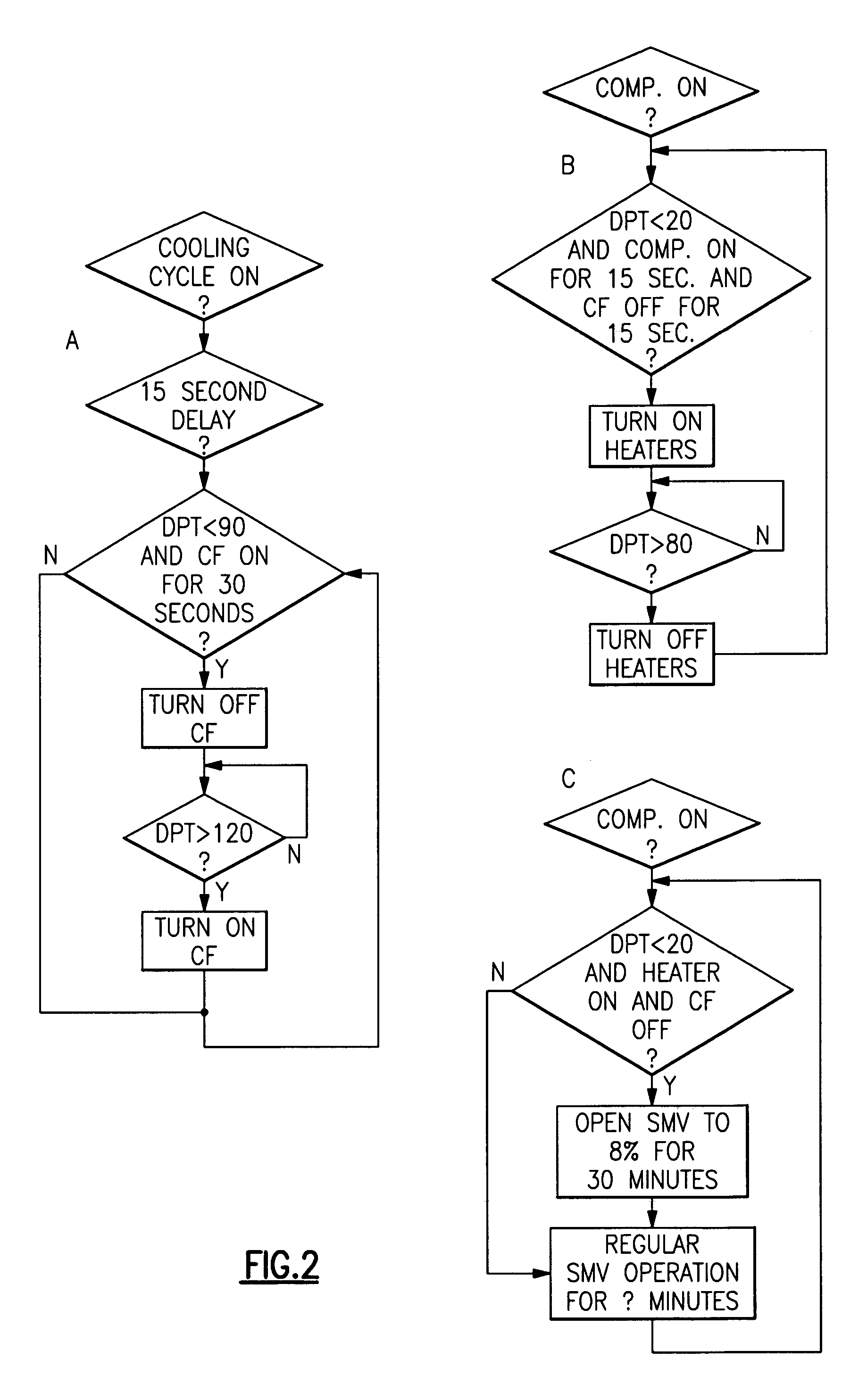Lubricant return schemes for use in refrigerant cycle
- Summary
- Abstract
- Description
- Claims
- Application Information
AI Technical Summary
Benefits of technology
Problems solved by technology
Method used
Image
Examples
Embodiment Construction
[0014] A refrigerant cycle 20 is illustrated in FIG. 1 having a compressor 22 compressing a refrigerant and delivering the refrigerant to a downstream condenser 24. A fan 25 blows air over the condenser 24. Typically, the condenser is an outdoor heat exchanger.
[0015] From the condenser 24 refrigerant travels to an expansion device 26, and from the expansion device 26 to an evaporator 28. The evaporator is an indoor heat exchanger. As shown, a fan 30 blows air over the evaporator, and that air is typically delivered into an environment to be conditioned. As also shown schematically, heater elements 32 are associated with the evaporator. These heater elements have been placed into some prior art evaporators to melt ice that may accumulate on the evaporator.
[0016] A suction modulation valve 34 is positioned downstream of the evaporator, and upstream of the compressor 22. The suction modulation valve is able to modulate the suction pressure of the refrigerant reaching the compressor 2...
PUM
 Login to View More
Login to View More Abstract
Description
Claims
Application Information
 Login to View More
Login to View More - R&D
- Intellectual Property
- Life Sciences
- Materials
- Tech Scout
- Unparalleled Data Quality
- Higher Quality Content
- 60% Fewer Hallucinations
Browse by: Latest US Patents, China's latest patents, Technical Efficacy Thesaurus, Application Domain, Technology Topic, Popular Technical Reports.
© 2025 PatSnap. All rights reserved.Legal|Privacy policy|Modern Slavery Act Transparency Statement|Sitemap|About US| Contact US: help@patsnap.com



